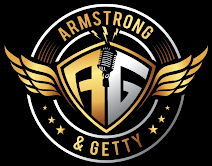WASHINGTON, Conn. (AP) — Griffin Kalin has a very particular set of skills.
They were passed on in childhood from his parents, who own a business recreating the material culture of prehistoric Native American life.
And they made him an especially suitable candidate for the unusual task he was handed in February 2018: Create a Wigwam escape room at the Institute for American Indian Studies, in Washington, that puts players into the pre-European-contact world of the Native Americans who once inhabited the region.
“Probably the biggest challenge, in terms of designing it, was trying to find ways around the fact that there was no written language, there was no metal for the most part. A lot of the norms for building escape rooms were outside of the realm of what we could do because of the context we chose to put it in,” Kalin says, on a recent Wednesday, standing in the 20-by-20-foot room located within the museum’s Research Center, beside the wigwam he built and his creative partner, Lauren Bennett.
Kalin, the museum’s creative director, and Bennett, the Wigwam Escape coordinator, are high school friends who linked up last year to oversee the room, which is an attempt by the museum to attract a more diverse group of visitors.
According to Executive Director Chris Combs, in its early years, the small museum, tucked in a remote section of the Litchfield Hills, would draw upward of 20,000 visitors annually. But that the opening of Mohegan Sun and Foxwood casinos, including the latter’s Mashantucket Pequot Museum, on the other side of the state in the 1990s precipitated a drop off. Now, Combs says, the museum is mostly visited by school groups and people over 65. So he sought to attract new demographics.
“We opened the escape room basically because of demographics I saw,” Combs says. “Millennials like escape rooms, parents like escape rooms.”
Combs enlisted Kalin, who, in addition to primitive skills, has an interest in gaming and exploration-style learning, and Bennett. They in turn brought a fellow Nonnewaug High School graduate and artist, Jesse Stevens, and opened the room in December.
“Jesse was around and could paint the walls, and Lauren was thinking of coming back around. Lauren’s really good at facilitating dialogue, guiding people through things and talking about experiences. Jesse had been working on sets of movies for a while, so he and I had some really interesting ideas about how to construct some of the wall stuff,” Kalin says. “We had the people we needed, which was super cool.”
The game mirrors other escape rooms in that players have 60-minutes to complete a series of tasks and exit the room. It’s meant to induce an empathetic response to history through immersion, Bennett says.
In addition to the wigwam, native flora and fauna native and objects common to an Algonquin village of the time dot the room. Stalks of corn were fashioned out of masking tape painted green and plastic gourds were 3-D printed in the University of Connecticut Maker Studio. Stevens’ mural depicts mountain laurels, mushrooms, lush forests and a native village. In one corner, a stuffed deer peers over some brush. Played on the loudspeakers are the calls of hawks, loons and, as the end of the challenge is approaching, owls. The clap of thunder signals that Bennett and Kalin, who track the progress of participants from a monitor outside of the room, want to offer players a hint.
Before entering, all visitors must forfeit their technological devices. They’ll find no clocks or timers on the inside — instead, time is told based on a light display that simulates the passing of a full day. The tasks force players to think critically about how people living in that place, at that time, would’ve interacted with their environment and secure the resources they needed to survive.
“You’re going to find yourself in the year 1518 in a Native American village in the Eastern woodlands. You’ve recently received word from a neighboring village of Metachiwon that they’re being affected by an illness and they’re asking for help,” Bennett explained. “So the main part of the game is gathering supplies for that journey. You need water, two different kinds of cooked foods and medicine.”
The hour ends with popcorn, a traditional Native American snack, and a debriefing in the Research Center lobby, which is meant to reinforce the cultural and historical lessons learned over the course of the hour.
“It’s rewarding when we talk to people, because our mission of educating people is coming through,” Combs says.





